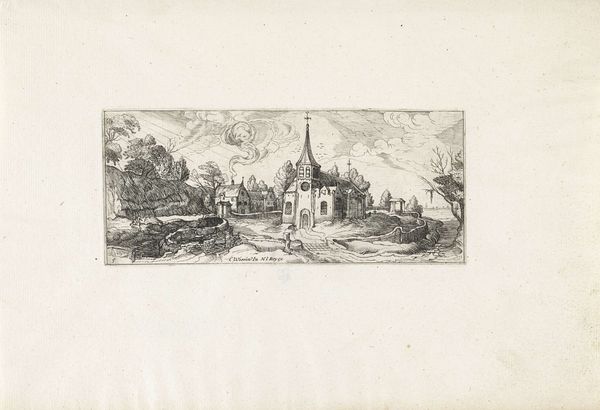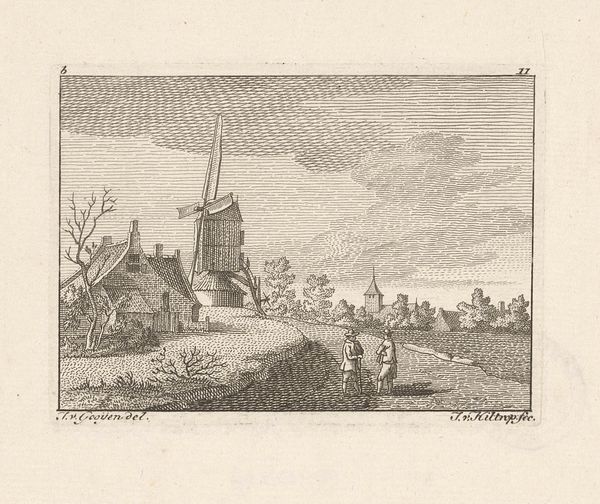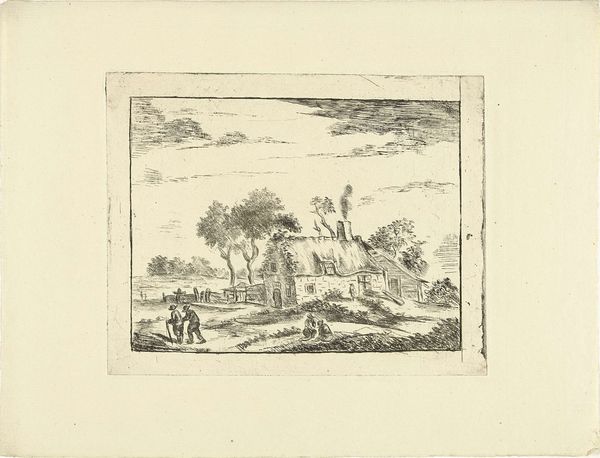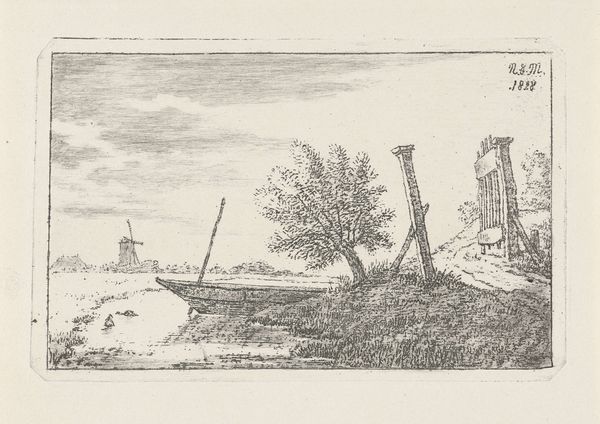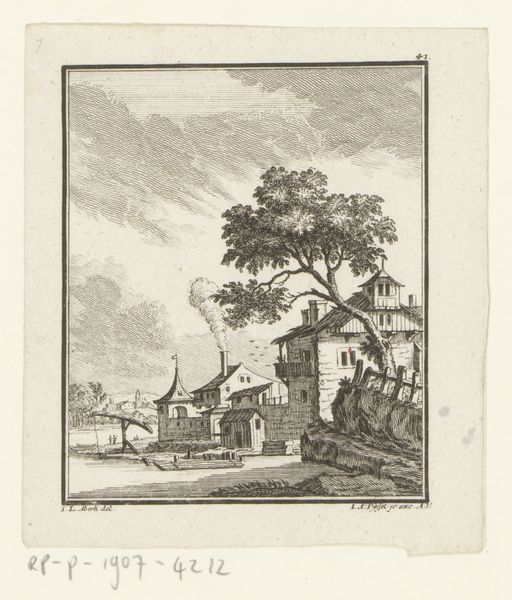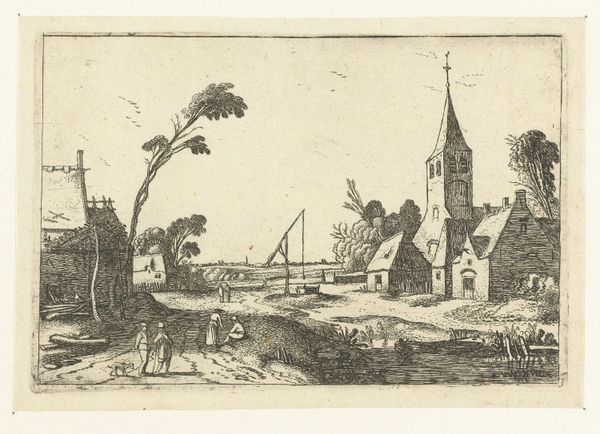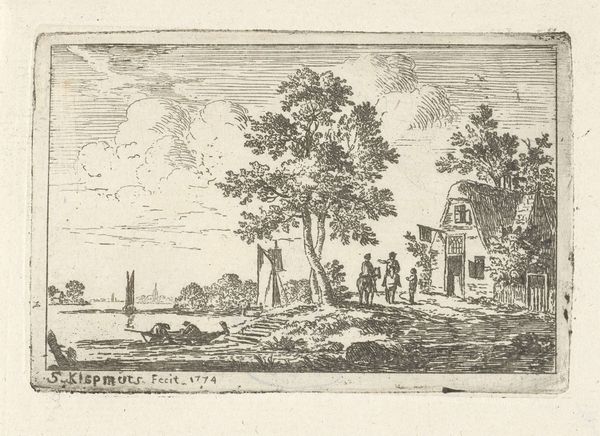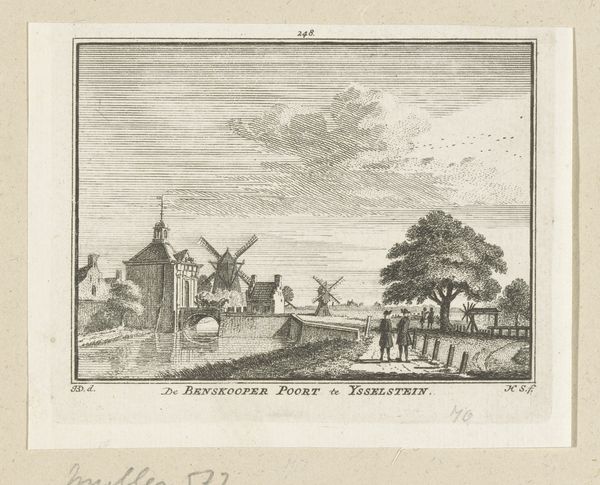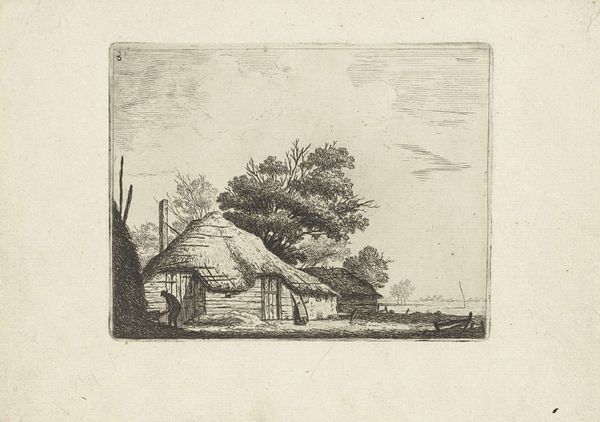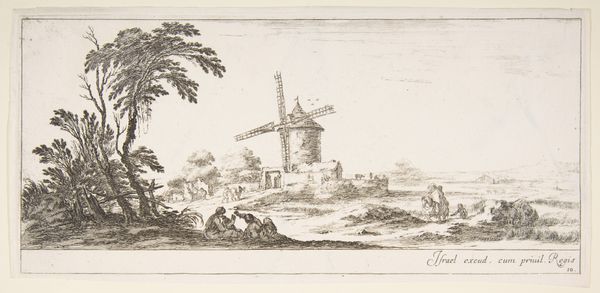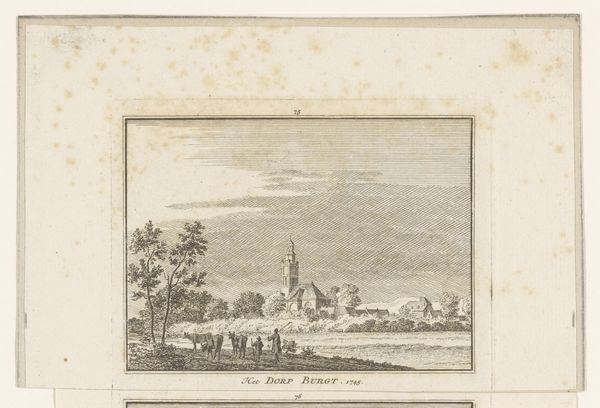
print, etching, engraving
#
dutch-golden-age
# print
#
pen sketch
#
etching
#
old engraving style
#
landscape
#
geometric
#
engraving
Dimensions: height 46 mm, width 60 mm
Copyright: Rijks Museum: Open Domain
Editor: This is "Cows on a Bank," dating roughly between 1744 and 1780, by Simon Klapmuts, rendered as an engraving. I’m struck by how serene it feels, a miniature pastoral scene. What do you see in this piece that I might be missing? Curator: What resonates most for me is how the mundane is elevated. Cows, windmills – typical Dutch imagery. But Klapmuts uses these as symbolic anchors. Consider the windmill. What does that suggest to you beyond just a structure? Editor: Industry, maybe? Labor? But it looks so peaceful here. Curator: Precisely. It’s a romanticized labor, not the reality. The cows, too. They embody a certain contentedness, an idyllic life that may not exist, yet we, as viewers, long for it. And the presence of geometric forms, how do those make you feel? Editor: Stable, organized? It gives some balance to the composition, so the peacefulness can hold its own. I suppose they speak to the order imposed on the natural world. Curator: Yes, there's a harmony created here, a visual echo of the era’s aspirations. It’s a constructed memory, perhaps, rather than an actual representation. Klapmuts presents an ordered, idealized past that offers emotional solace. This connection is why the engraving remains emotionally potent. Editor: So it’s less about literal cows and more about cultural memory. I’ll definitely view it differently now!
Comments
No comments
Be the first to comment and join the conversation on the ultimate creative platform.
